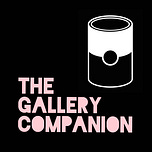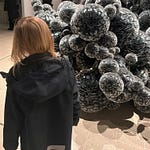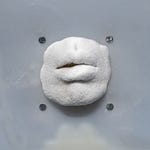I’ve been thinking about lines this week — the ones that you can see and the invisible ones that you can only feel. There are spade-fulls of both in Frank Auerbach’s charcoal drawings from the 1950s and 60s, which I saw in an exhibition at the Courtauld Gallery in London on Thursday. It is powerful art, and I’ll come back and talk more about it in a moment.
But first, more about lines. I’ve been reading a book by the geographer Dr Maxim Samson called Invisible Lines: Boundaries and Belts That Define the World. Geography isn’t usually a subject I avidly lean towards, but I was tempted by the intriguing title and it was a fascinating read. Samson’s book is an exploration of the hidden geographies that affect the way we exist in and move through our physical environments. Rather than focusing on natural boundaries such as oceans, rivers, forests and mountains, he talks about the immaterial boundaries that we can’t see but whose presence impacts on us and how we engage in the world every day.
These are not lines that are visible, but we experience them nonetheless. We sense them. We feel them. We consciously and subconsciously process and act on them. Walking around any big city, for example, we might notice how demographics change, how architecture changes, and how the languages we hear being spoken change. These subtle shifts can affect the directions we move through space and sometimes impact on the way we communicate through our bodies. We might choose routes because we perceive them to be safer or prettier, or because we feel a stronger sense of belonging there.
Samson discusses cultural lines that categorise people in different ways in geographical space. Identity plays a huge role, both in how we perceive ourselves and how others perceive us, and it affects our access to certain places and services. One of the many fascinating examples he draws on is the history of redlining districts in the USA, a practice dating back to the 1930s when government-sponsored mortgage lenders colour-coded neighbourhoods according to risk. Red neighbourhoods had predominantly black residents, whilst green areas had largely white populations.
This impacted on how banks and insurance firms profiled customers, often denying loans to people from red neighbourhoods. Redlining was outlawed in 1968, but its legacy continues today in cities like Detroit, whose 8 Mile Road is a conceptual boundary between the white, wealthy suburban neighbourhoods to the north of it, and the poorer districts south of it with predominantly black residents. Locals describe it as being like a border.

As I was reading about these ideas in Samson’s book I was reminded of a film I saw in an exhibition last year by the New York-based Argentinian artist Mika Rottenberg. Cosmic Generator (2017) explores ideas about the movement and restriction of goods and people, the visible and invisible divisions that are constructed to separate us, and who and what exactly can circulate freely in particular places around the world.
The film is set in the cities of Calexico and Mexicali where the US/Mexico border meets, and in the mind-bogglingly vast Yiwu Market in China, a global hub for the trade in plastic commodities. Yiwu is where 80% of the world’s Christmas decorations and two-thirds of the world’s toys are bought and then shipped around the globe. The significant Chinese population living in Mexicali, whose presence dates back to the early 20th century when merchants and farmers first came to the area from China, connects Yiwu and these two towns on the US/Mexico border in this film.
The residents of Calexico and Mexicali are divided by a 7.5 metre high metal barrier, and movement north across the border is severely restricted for the population of Mexicali. It can take hours to cross the international checkpoint, and apps have even been developed by locals to calculate waiting times.
Meanwhile US citizens crossing the border in search of cheaper goods and services in the southern city are fast-tracked in both directions. Mexicali is known for its underground network of tunnels through which local residents subvert this restriction of movement from the physical barrier above ground. Rottenberg’s surreal film explores these ideas of permeability, restriction and division, the collapse of time and space in our world, and the attempts by authorities to reinforce the lines. She talks about these ideas in this 5 minute video:
But back to Frank Auerbach and his charcoal portraits. Auerbach is one of Britain’s most revered contemporary artists, whose paintings are characterised by his thickly layered impasto technique. He really slaps on the paint in heavy, textured strokes, building up layers of colour which he barely mixes together. The effect is very expressive, and there’s often a visceral feeling about them, like he’s communicating a raw truth about the sitter. He paints the same people repeatedly, friends and family members, over long periods of time.
Auerbach’s charcoal portraits are interesting because they share a similarity with his paintings in their texture and rawness. He has talked about how he would draw the faces of his sitters over and over again, spending hours on a portrait only to rub it out, unsatisfied, and to start again all over. He would use the same piece of paper, which would disintegrate through this process of constant erasing over months. He just patched up the bits of paper that had fallen apart and carried on.
The finished works are characterised by strong black lines which lead the eye around sharply contrasting light and dark areas. But the drawings are also infused throughout by a sort of ghostly blur, which is evidence of his previous lines and his repeated failed attempts to capture the essence of his subjects. One of the sitters we see several times in this show is Stella West with whom Auerbach was in a relationship for many years. Auerbach recently said this about his charcoal heads:
When I got down something that looked like even a fairly skilful adumbration of the thing in front of me it seemed somehow too slight, and the relationship between myself and Stella who was sitting for me seemed too momentous in order to leave it at that. So I would rub it out again and again and again and I would do it three nights a week.
It seemed to me as I was looking at Auerbach’s charcoal portraits that his strong black lines (and those that had been rubbed out underneath) represented another kind of invisible boundary in space — that boundary between two people that we can feel and sense but we can’t see. This recent podcast interview with Auerbach, in which he talks about his childhood growing up in England as a refugee from the Nazis and his life as an artist, is well worth a listen:
As always, Gallery Companions, I’d love to know what you think about any of the artists and ideas I’ve talked about here. And please share your experiences of the invisible lines in our world that have had an impact on you.












